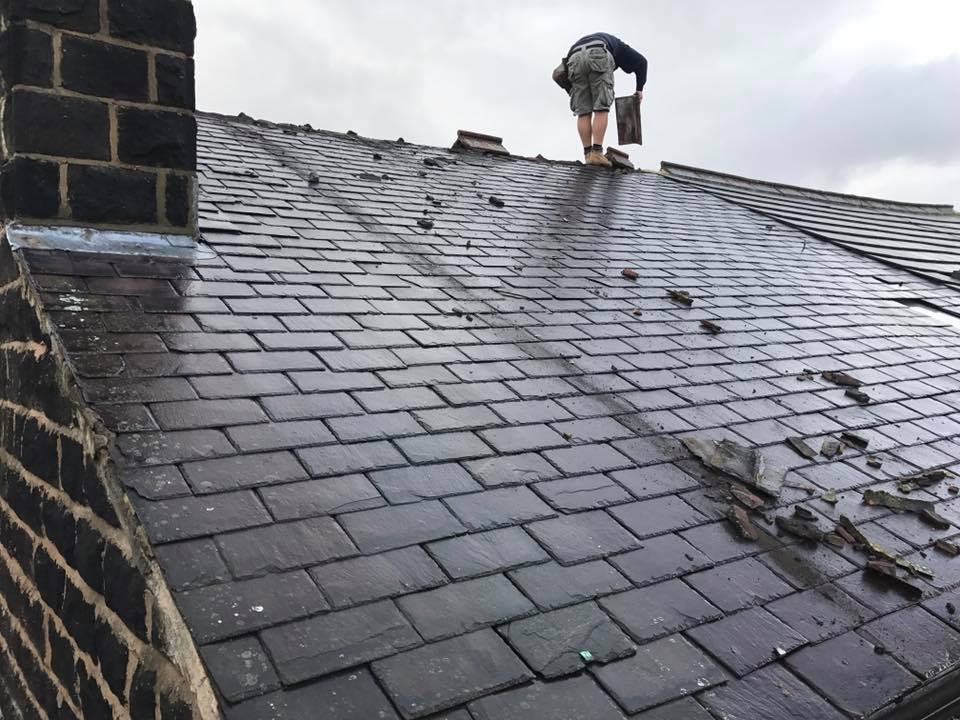
16 May Latest roofing technologies
Buying a new roof isn’t as exciting as buying the latest smartphone with an edge-to-edge display and under-screen fingerprint sensor, but advancements are being made in structure and materials to make roofs better than ever.
These constant advancements in roofing technology mean roofs built a decade ago, while certainly solid and fit for purpose, can have a shorter lifespan and poorer performance than those built today. In this article, we’ll take a look at the latest roofing technologies and show how they improve on traditional alternatives.
GRP construction
First up we have GRP roofs. Roofs with rafters, an outer ring beam and ridge made from glass-reinforced plastic weigh around 30% less than the timber equivalent and are stronger to boot. They also don’t rot or degrade.
For a house this doesn’t matter, but for outbuildings, conservatories and orangeries it’s a gamechanger because it enables a glass or polycarbonate roof to be replaced with a solid tiled one – often without additional bracing.
Engineered tiles
Engineered tiles are simply manmade tiles that mimic the appearance of a natural tile, such as slate, concrete or clay. They are used in lightweight applications, or any application where the natural alternative is unsuitable or hard to get hold of.
The engineered alternative is stronger, more durable and lighter, making it suitable for those GRP solid roof conversions on conservatories, orangeries and outbuildings. They also offer reduced maintenance and look as good as the real thing. You can’t tell they’re not the real thing unless you inspect them with a microscope.
Single ply membranes
Single ply roofing membranes provide a waterproofing layer in a single sheet. The latest technology is a polymer construction, or mixed plastic. These single ply systems boast long-term durability and outstanding fatigue resistance.
The thickness of a single ply is around 1.1mm but some are up to 2mm. The membranes we commonly work with include glass-reinforced and polyester membranes. Both offer excellent performance and have their applications. Other types include PVC (Polyvinyl chloride) single ply, TPE (Thermoplastic Polyolefin Elastomer) single ply, VET (Vinyl ethylene terpolymer) single ply and FPO (Flexible Polyolefin) single ply.
Solar panel shingles
Why have solar panels when you can have solar shingles? Solar shingles not only look better, but they perform better too because they cover the whole roof, not just a portion of it. This makes them more expensive, but the energy savings are huge, with a roof covered in solar shingles clawing back its investment inside three years.
Depending on the product, solar shingles are installed on top of existing shingles or directly onto the underlay. There’re a wide range of manufacturers out there. Tesla were the first to wow the market with their range of convincing solar shingles.
Smart skylights
The days when you had to open a skylight by hand are long gone. ‘Smart skylights’ have a solar panel which powers features such as the ability to open and close at set times, or even when rain is detected. They work all-year round.
A good example is the VELUX Integra series with the VELUX Active climate control system, which monitors ambient temperature, humidity and CO2 levels and opens and closes your roof windows accordingly to make your life easier. Of course, there’re also skylights that can be operated with a remote control or using your phone.
If you need a new roof and you want to find out more about any of these technologies, we’re here to help. Call us on 0800 9788 168 to discuss what it is you need. We’re based in Leeds but serve the whole of England.

Sorry, the comment form is closed at this time.